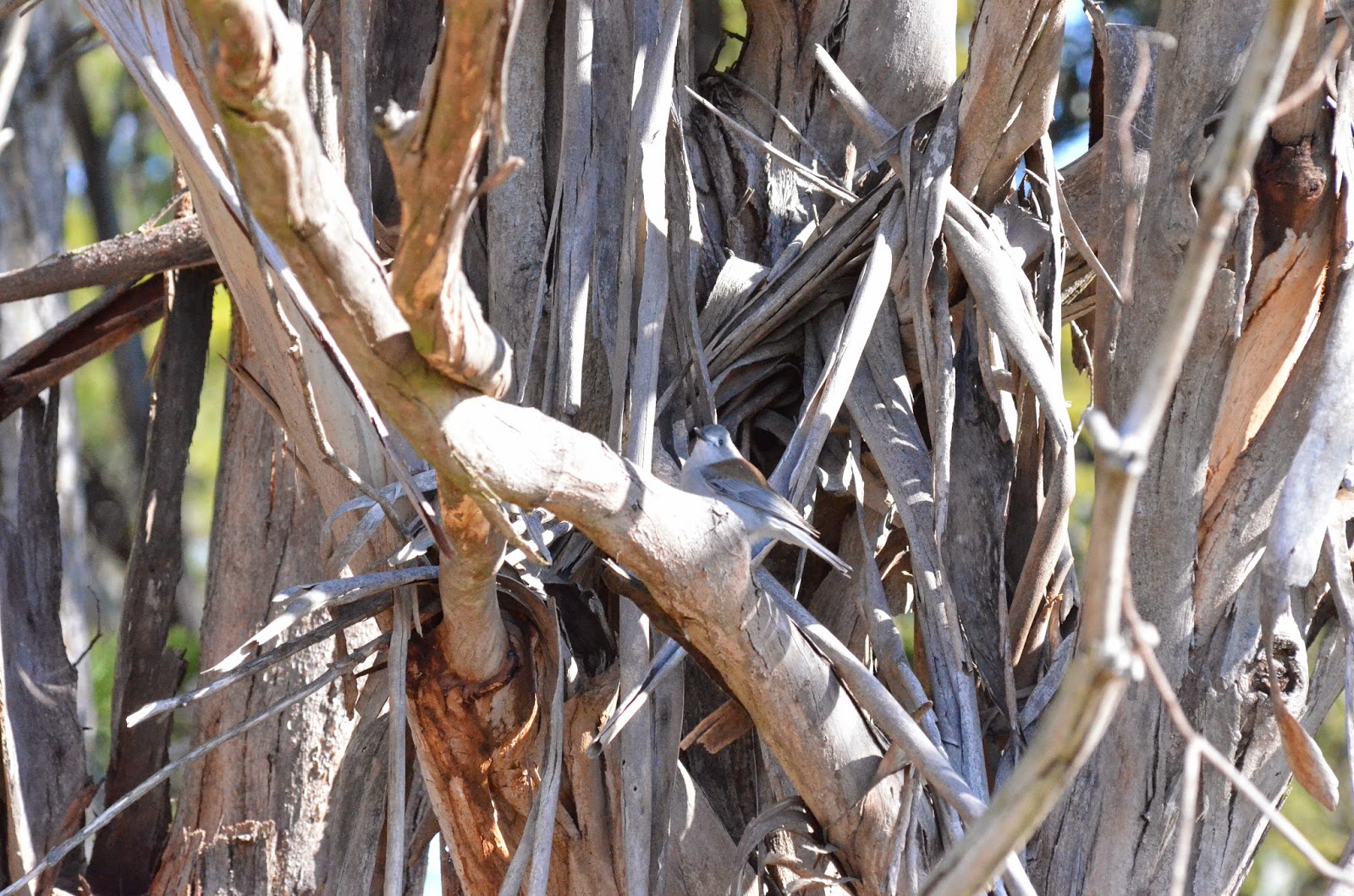So after making a wide range of observations about the behaviour that dinosaurs may have exhibited based upon that observed in birds around my Garden (and longer trying to get it from my notes and on to the blog), it comes time to look at a specific question.
What do I mean by bouncing? Well lets look at our little blue star the Superb Fairy Wren. When they move about, they either fly or bounce - they don't walk! On the ground if they move about it is always a two-foot jump, but it looks so effortless that I think of it as bouncing rather than jumping.
Lets have a look at some examples of Mr Blue in action.
 |
| Choosing Direction |
 |
| The Launch - Legs trailing for the push |
 |
| Regather - Legs pulled up and under |
 |
| Landed. |
Now this seems to happen really fast (tricky to get photos) and is often a series of jumps or bounces from point A to point B.
Lets have a look at another series - this time not in my garden, but on Kangaroo Island in South Australia, observed (and photographed) during a palaeontology field trip in 2013.
.
.
As this fellow is not standing in the grass it is easier to see his legs in action (although a little blurry, sorry). To be honest, there isn't really a lot of leg there - so the bouncing behaviour is not powered by huge muscles in the legs, but must be more about spring and tension in the tendons. His legs are not in exactly the same position; I don't know if this is significant. Perhaps it makes it more of a skip than a jump?
However it is that he manages it, it seems effortless as they can keep it up for ages bobbing here and there in search for food.
Notice that the position of head to body chases as the foot position alters; dinosaurs probably did this too.
So what is "Normal" ground based movement for birds?
Well bipedal locomotion (what we use once we get past crawling) is usually a one foot at a time thing. Like this Raven (photographed on KI at the same time as the Wren above).Notice that the position of head to body chases as the foot position alters; dinosaurs probably did this too.
So what about the dinosaurs?
You may remember this species from the Jurassic Park movie franchise, it is called Compsognathus. Unlike many of the dinosaurs portrayed in the film it is about the correct size, equal to that of a chicken. Hesperonychus is another species of similar size as is Scipionyx.
None of these species are large, and all are at least from the same group of dinosaurs birds are descended from, although some are more distant in that lineage. Their mass is fairly light, so could they bounce?
Although about the same size as a chicken they are more lightly built, and well balanced across the hips like the Blue Wren (although the tail feathers make up the counterweight for the body rather that the dinosaur's bony tail). So I think it is a plausible hypothesis, but one that needs some testing.
"Chickens don't bounce" I hear you say... and I'd have to agree with you. Yet the skeleton of a chicken is not as well balanced as that of either the Wren or any of these small carnivorous dinosaurs.
To make the best comparison we would need wren-sized tiny dinosaurs, but as pointed out in the Hesperonychus article linked above, small dinosaurs are absent (for the most part) from the fossil record. We know from looking at modern ecosystems that there are usually many more small critters than large ones; so they should have existed, but due to the nature of the fossilisation process they are unlikely to be preserved.
However that doesn't mean that they weren't there, the same way that we don't know that they didn't bounce... but we can't prove they did either at this stage. Yet without our examination of modern animals it would be impossible to have reconstructed dinosaurs at all, so we study, learn, examine, test, hypothesize and so forth adding new bits of understanding to fill in the picture of the prehistoric past.


















































